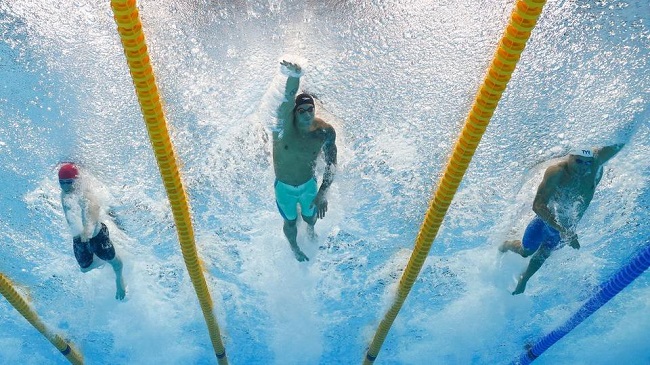In the Olympics, how many laps do you have to swim?
There were thirty total laps. It would take 30 laps of an Olympic-sized pool (50 metres in length) to cover 1,500 metres (0.93 miles). For swimmers, it is the longest Olympic event that does not take place in open water. If your local pool is the standard 25 yards in length, that’s 66 lengths.
Australia’s Angie Groves set the record in 2004 with a total of 89 laps.

Michael Phelps swam 36 laps in the 100-meter butterfly in 2008, setting a new world record. Peter Vanderkaay of Canada swam 39 laps in the 1976 Olympics while competing in the 200-meter individual medley.
Phelps also previously had the record for most gold medals earned in a single Olympiad. Since 2000, he has won a total of six gold medals, making him the current record holder. Before this, from 1968 to 1972, American swimmer Mark Spitz held the previous record with five gold medals.
With her victory in the 400-meter individual medley at the 2004 World Championships in Melbourne, Australia, Australian swimmer Angie Groves set a new lap mark of 88.5.
When she swam without stopping for over two hours during the trial heats of the same event at the Olympics two years later, she set a new world record for the most consecutive laps done by a female swimmer.
Read Also:
- What is the Highest Score in Olympic Gymnastics?
- Jordan Chiles has Unusual off Day for US Gymnasts
- Shacarri Richardson and Her now Uncertain Path to the Olympics
Contents
For how long do swimmers compete?
Both 25-yard (or 25-meter) and 50-meter (or longer) pools are used for long- and short-course swim meets, respectively. Depending on the venue, open-water swimming events can be anywhere from 500 metres to 6.2 miles in length.
Due to the risks posed by other swimmers and the environment, long-distance races are uncommon. This is because shorter events are less complicated to organise and execute. The duration of most races is around an hour, with the exception of open-water competitions, which can go on for up to six.
Except for races involving very young children, there is no time limit for individual events. Teens and adults have a stricter time limit before they are eliminated from competition. How this period is established is different for the two racial categories. For both the men’s and women’s divisions, the winners progress to the next round.
The winner of a sprint is the first competitor to cross the finish line. The winner of a long-course swimming event is the competitor who crosses the finish line first. Any competitor who manages to break away from the pack in an open-water race, even if they’re a long way off the pace set by the leader, has a chance at victory.
Typically, children ages one to four compete in children’s races. All children aged nine and up are welcome to participate in the races for older children, which have separate gendered categories for the boys and girls.
Which Olympic Swimming Event is the Longest?
For the ladies, it’s the 1,500-meter freestyle race. The longest swimming event in the Olympics is the women’s 1,500-meter freestyle. It’s the same as swimming 30 lengths of the Olympic pool, or 0.93 miles. While this is a brand-new Olympic event for women, it has been contested at worlds for quite some time.
Aside from the marathon, the men’s 1,500-meter freestyle is the longest Olympic swimming competition. This is also the most typical swimming distance for this competition. Olympic swimming’s longest individual event is the men’s 3,000-meter freestyle.
It debuted at the 1948 London Olympics and hasn’t changed since. One of the longest Olympic team events is the men’s 4×200-meter freestyle relay. Having debuted at the 1952 Olympic Games in Helsinki, Finland, it has not been altered since.
Read Also:
- What is the Figure Skating Gala?
- How do You Score in Curling in the Olympics
- Olympic Bobsledder Who Killed Himself Likely Had C.T.E.
Conclusion
The maximum number of competitors from any one country in any given event is two, with the exception of the 1,000-meter races, which can have up to three participants from any one country. An athlete scores a 0 in the event if they do not complete it.
The winner is the person who finishes the race overall the quickest. In the event of a tie, the tied athletes continue to compete in additional rounds.
The American duo of Ryan Murphy and Aaron Blunsen made history at the 2016 Olympics by winning the men’s 1,500-meter freestyle event for the first time.




